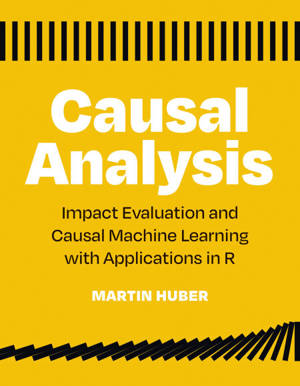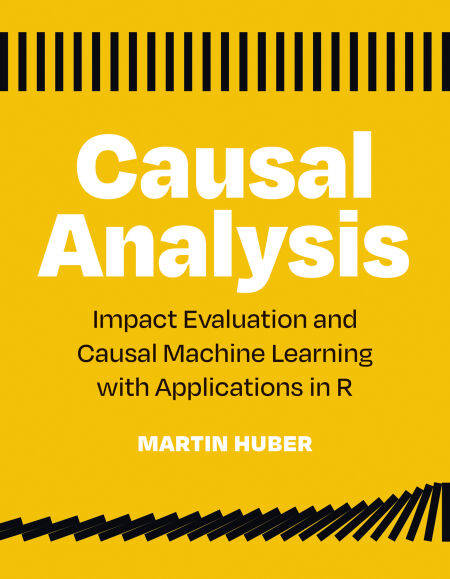
- Afhalen na 1 uur in een winkel met voorraad
- Gratis thuislevering in België vanaf € 30
- Ruim aanbod met 7 miljoen producten
- Afhalen na 1 uur in een winkel met voorraad
- Gratis thuislevering in België vanaf € 30
- Ruim aanbod met 7 miljoen producten
Zoeken
Causal Analysis E-BOOK
Impact Evaluation and Causal Machine Learning with Applications in R
Martin Huber
E-book | Engels
€ 59,14
+ 59 punten
Omschrijving
A comprehensive and cutting-edge introduction to quantitative methods of causal analysis, including new trends in machine learning.
Reasoning about cause and effect—the consequence of doing one thing versus another—is an integral part of our lives as human beings. In an increasingly digital and data-driven economy, the importance of sophisticated causal analysis only deepens. Presenting the most important quantitative methods for evaluating causal effects, this textbook provides graduate students and researchers with a clear and comprehensive introduction to the causal analysis of empirical data. Martin Huber’s accessible approach highlights the intuition and motivation behind various methods while also providing formal discussions of key concepts using statistical notation. Causal Analysis covers several methodological developments not covered in other texts, including new trends in machine learning, the evaluation of interaction or interference effects, and recent research designs such as bunching or kink designs.
Most complete and cutting-edge introduction to causal analysis, including causal machine learning Clean presentation of rigorous material avoids extraneous detail and emphasizes conceptual analogies over statistical notation Supplies a range of applications and practical examples using R
Reasoning about cause and effect—the consequence of doing one thing versus another—is an integral part of our lives as human beings. In an increasingly digital and data-driven economy, the importance of sophisticated causal analysis only deepens. Presenting the most important quantitative methods for evaluating causal effects, this textbook provides graduate students and researchers with a clear and comprehensive introduction to the causal analysis of empirical data. Martin Huber’s accessible approach highlights the intuition and motivation behind various methods while also providing formal discussions of key concepts using statistical notation. Causal Analysis covers several methodological developments not covered in other texts, including new trends in machine learning, the evaluation of interaction or interference effects, and recent research designs such as bunching or kink designs.
Most complete and cutting-edge introduction to causal analysis, including causal machine learning Clean presentation of rigorous material avoids extraneous detail and emphasizes conceptual analogies over statistical notation Supplies a range of applications and practical examples using R
Specificaties
Betrokkenen
- Auteur(s):
- Uitgeverij:
Inhoud
- Aantal bladzijden:
- 336
- Taal:
- Engels
Eigenschappen
- Productcode (EAN):
- 9780262374927
- Verschijningsdatum:
- 31/07/2023
- Uitvoering:
- E-book
- Beveiligd met:
- Adobe DRM
- Formaat:
- ePub

Alleen bij Standaard Boekhandel
+ 59 punten op je klantenkaart van Standaard Boekhandel
Beoordelingen
We publiceren alleen reviews die voldoen aan de voorwaarden voor reviews. Bekijk onze voorwaarden voor reviews.








